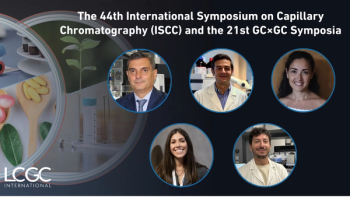
- August 2021
- Volume 17
- Issue 08
Identifying Illegal Dyes in Red Spices Using UHPLC–MS/MS
Researchers from the University of Barcelona have developed an UHPLC–MS/MS method to determine eight banned dyes in turmeric, curry, and chili products.
Researchers from the University of Barcelona in Barcelona, Spain, have developed an ultrahigh-performance liquid chromatography tandem mass spectrometry (UHPLC–MS/MS) method to determine eight banned dyes in turmeric, curry, and chili products (1).
The use of dyes to improve the aesthetic qualities of food is a common practice in food industries, however, certain types of dyes have been banned because they have been deemed unsafe for human consumption. Dyes such as Sudan I-IV, Sudan Orange, Sudan Red 7B, Para Red, and Rhodamine B have been banned in many countries because they have been linked to genotoxic and carcinogenic properties. However, not all countries have implemented such regulations and the monitoring of imported food products for such compounds is therefore of great importance, requiring new sensitive methods.
In this study, the feasibility of electrospray ionization (ESI), atmospheric-pressure chemical ionization (APCI), and atmospheric pressure photoionization (APPI) for the ionization of the dye compounds was evaluated. The tandem mass spectrometry (MS/MS) fragmentation of dye compounds was evaluated and used to establish fragmentation pathways and common fragmentation behaviours, with the most significant, characteristic, and abundant product ions being selected for a UHPLC–MS/MS method targeting those compounds from the spice samples.
The study identified that out of the three atmospheric pressure ionization sources APCI performed the best, with matrix effect (ME) values ranging from 2 to 25%. Furthermore, the proposed method performed well, providing low method limits of detection (MLODs) (1–48 μg kg−1), good intra-day precision (RSD % < 15%), and accurate quantitation (relative error % < 15%).
Researchers went on to demonstrate the applicability of the method through the analysis of turmeric, curry, and chili product, with the results showing that the method was able to detect the compounds in the low μg kg−1 range.
Reference
- A. Arrizabalaga-Larrañaga et al., Anal. Chim. Acta 1164, 338519 (2021).
Articles in this issue
over 4 years ago
Vol 17 No 8 The Column August 2021 Europe & Asia PDFover 4 years ago
Vol 17 No 8 The Column August 2021 North American PDFover 4 years ago
To Prep or Not to Prep? That is the Question…over 4 years ago
Computer-Assisted Down-Skillingover 4 years ago
Tips & Tricks: A Few Things Chromatograms Can (and Can’t) TellNewsletter
Join the global community of analytical scientists who trust LCGC for insights on the latest techniques, trends, and expert solutions in chromatography.




